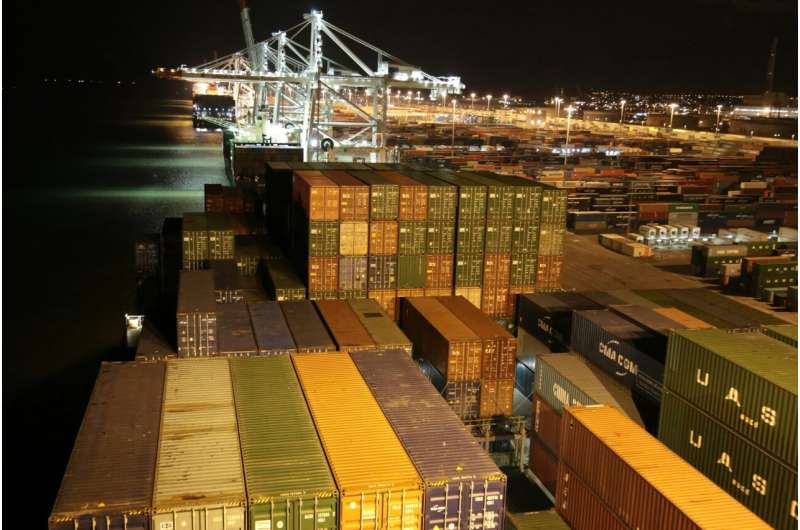This article has been reviewed according to Science X's editorial process and policies. Editors have highlighted the following attributes while ensuring the content's credibility:
fact-checked
trusted source
written by researcher(s)
proofread
How protectionism can help developing countries unlock their economic potential

State intervention has made a comeback. States have, in one way or another, always intervened in markets to develop specific industries and push innovation. But there has been a renaissance since the 2010s, in particular with respect to industrial and trade policy.
There are many reasons for this. The fallout from the global financial crisis in 2007–08, increasing geopolitical tensions, and efforts to strengthen domestic manufacturing in the wake of supply chain disruptions are a few of the leading factors.
Alongside the comeback of state intervention, experts are chiming in on what state-led growth strategies should look like. They highlight different things, but one piece of advice is recurring: these strategies need to incentivize exports and shy away from protectionism.
Governments are right to focus on exports. But the story about protectionism is more complicated. In fact, in most cases of successful industrial and trade policy, a push for exports has been combined with elements of protectionism.
South Korea and Taiwan are good examples. These countries transformed their economies from low-income to high-income at lightning speed, needing only 30 years to do so (from roughly 1960 to 1990).
They achieved this feat through meticulously crafted policies, and export-orientation was a key feature. In a speech in 1965, the South Korean president, Park Chung-hee, called exports "the economic lifeline" of the country. But protectionism was equally important.
Emergency tariffs were often imposed on items with excessively high import growth. In addition to this relatively visible measure, a range of "covert" protectionist measures were used. For example, a number of special laws on most imports almost invariably meant that import permission had to be obtained from a public agency.
An array of taxes not specified as tariffs were also often imposed when attempts were made to import non-essential items such as golf clubs, whisky and French wine. They were frequently labeled as an education tax, a defense tax, or simply a "special" tax.
In Taiwan, protectionist policies featured more explicitly than in South Korea. In the mid-1970s, almost half of the items in the tariff schedule still carried import tax rates of over 40%.
And, like in South Korea, Taiwan applied a range of non-tariff barriers. These included the tying of import licenses to export performance, restrictions on which countries imports could come from and who could import them, and "approval" mechanisms for import control.
The latter essentially meant that, for firms wishing to import certain products, a reference check had to be made to make sure that domestic suppliers could not meet the would-be importer on price, quality and delivery.
A path well lit
By using protectionist measures to avoid excessive import growth and shield domestic firms from competition, South Korea and Taiwan were not doing something supremely novel.
In fact, the most protectionist country throughout history is the US. It had the world's highest average tariff rates on imported manufactures throughout the 1800s, a period that saw the country transform into a global economic powerhouse.
China in the 1990s and 2000s is another prime example of incorporating protectionism into the design of industrial and trade policy. However, it was a form of protectionism that looked slightly different.
China relied heavily on attracting foreign investment into manufacturing, which was done strategically by nudging multinationals to form joint ventures with Chinese state-owned enterprises. This increased the probability of technology transfer and, in time, of replacing imported products with those produced in China.
Overall, China's state-led industrialization strategy has been hugely successful. Practically all manufactured products today can somehow be traced to a production process in China, and the country dominates many global industries.
While protectionism may be essential to successful economic development, a few issues still need to be addressed.
First, protectionist measures like tariffs have no guarantee of being successful. The 1950s and 1960s, for example, saw governments across Africa and Latin America protect domestic firms from outside competition. The intention was to develop a domestic industrial base, but the firms largely failed to become competitive on the world market.
That said, export subsidies (and state intervention more broadly) have no guarantee of working either. Does this mean we should ditch all state intervention? Of course it doesn't. All state intervention—including protectionism—can fail, but without any state intervention, failure is a guarantee.
One way to think about the practice of industrial and trade policy is that it's like venture capital: all policies should be evaluated like a portfolio, within which a small number of successful bets will pay for all the failures.
Second, can all countries be protectionist at the same time? Probably not, and this is why people worry about trade wars. In fact, we are seeing this unfold at the moment between China and the US.
In a world where nation states can retaliate against one another with things like tariffs, and as long as economic competition between firms and nation states remains a central part of how the global economy is organized, the playing field for economic competition needs to be made level.
Right now, it isn't level. It vastly favors the wealthiest and most powerful countries, and the multinational corporations based within them.
This is why, in international trade agreements, lower-income countries should be allowed more space in their design of economic development policy—including, but not limited to, protectionist policies.
Simply put, countries that are lagging technologically should be granted a larger policy toolbox. This would give lower-income countries a better chance of catching up with high-income countries. And if we are to take one lesson from economic history in this respect, it's that protectionist policies have been vital for catching up.
Provided by The Conversation
This article is republished from The Conversation under a Creative Commons license. Read the original article.![]()




















